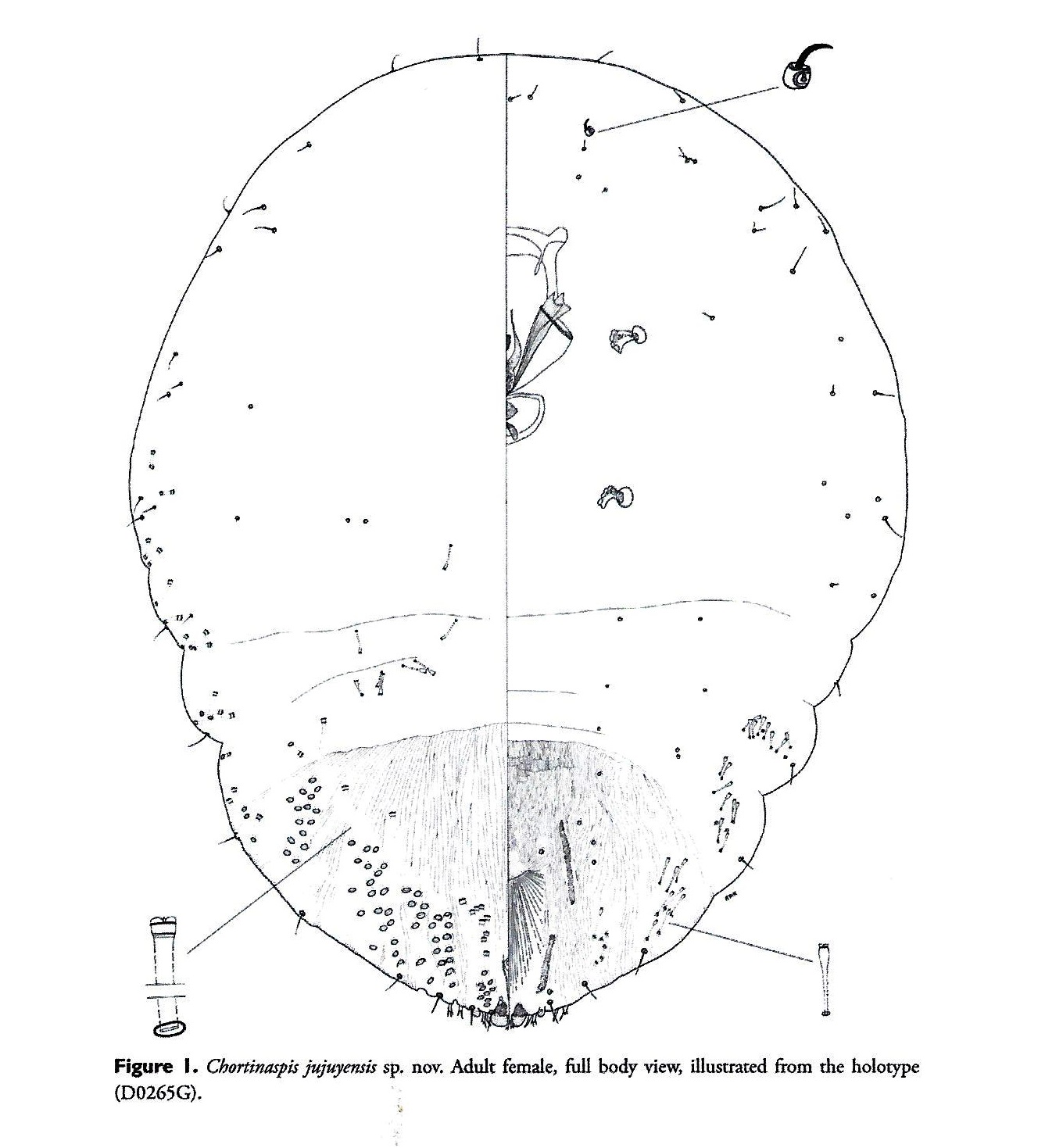Valid Names Results
Chortinaspis jujuyensis Schneider, Claps, Wei, Normark & Normark, 2020 (Diaspididae: Chortinaspis)Nomenclatural History
- Diaspidiotus sp undesc #2 Morse & Normark 2006. unavailable name that is placed
- Diaspidiotus sp. undesc Gruwell, Wu & Normark 2009. unavailable name that is placed
- Chortinaspis ud0265 Schneider, et al. 2018. unavailable name that is placed
- Chortinaspis jujuyensis Schneider, Claps, Wei, Normark & Normark 2020: 49. Type data: ARGENTINA: Jujuy, Humahuaca, Ruta 9, entrada a Iruya; (22.997S, 65.369W); 2/12/2002; by L. E. Claps, P. Zamudio, L. Díaz-Briz, and P. Cabrera.. Holotype, female, by original designation Type depository: Tucuman: Fundacion e Instituto Miguel Lillo, Universidade Nactional de Tucuman, Argentina; Washington: United States National Entomological Collection, U.S. National Museum of Natural History, District of Columbia, USA; accepted valid name Notes: Paratypes: Argentina • 2 adult females; same slide and data as holotype. adult female; same data as holotype; USNM (D0265L) • 1 adult female; same data as holotype; USNM (D0265M). Illustr.
Common Names
Ecological Associates
Geographic Distribution
Countries: 1
- Argentina
- Jujuy | SchneiClWe2020
Keys
- SchneiClWe2020: pp.67-71 ( Adult (F) ) [Aspidiotini in Argentina]
Remarks
- Systematics: http://zoobank.org/33040435-CC00-4B65-A5F8-687A02E4BCA8 (Schneider, et al., 2020) The small ribosomal subunit (16S) sequences of the primary bacterial endosymbiont, Uzinura diaspidicola, of C. jujuyensis has also been published: GQ424853.1. Chortinaspis jujuyensis. shares similarities with C. graminella. (Cockerell) and C. frankliniana. Ferris. The median lobes of C. jujuyensis.. are apically truncate or nearly rectangular in shape like those of C. graminella. and have rough apical edges like those of C. frankliniana.. But C. jujuyensis.. can be distinguished from both species by its narrow, smooth second lobes, in contrast to the broadly truncate and notched second lobes seen in the other two species. It differs from C. chortina. (Ferris) in that it lacks any plates anterior to the position of the third lobes. (Schneider, et al., 2020)
- Structure: Adult female presumed to secrete scale cover, not pupillarial. Appearance in life not recorded. Slide-mounted adult female 730–1110 (holotype 860, median 860) μm long, 590–800 (holotype 680, median 680) μm wide; broadest near mesothorax and metathorax. Body outline nearly oval. Derm membranous except for pygidium. Antennae simple, each with one thick, flagellate seta. (Schneider, et al., 2020)
- General Remarks: Detailed description and illustration in Schneider, et al., 2020.
Illustrations
Citations
- AndersWuGr2010: phylogeny,
- GruwelWuNo2009: Cardinium, 1053
- MorseNo2006: phylogenetics, 340
- NormarOkMo2019: phylogeny, 16, S1
- RugmanAnMo2010: phylogeny, 30–38
- SchneiClWe2020: description, distribution, endosymbiont, genebank, illustration, key, taxonomy, 49-52, 67
- SchneiOkNo2018: phylogeny, 8



